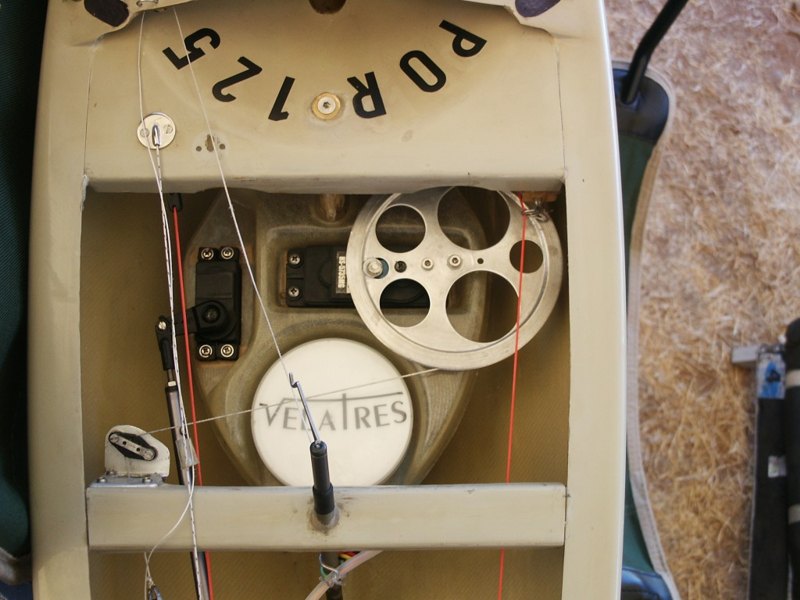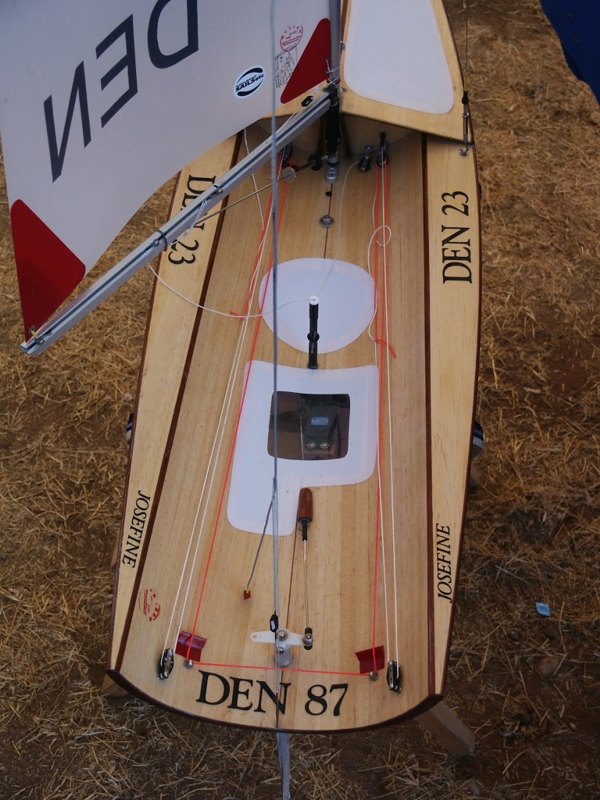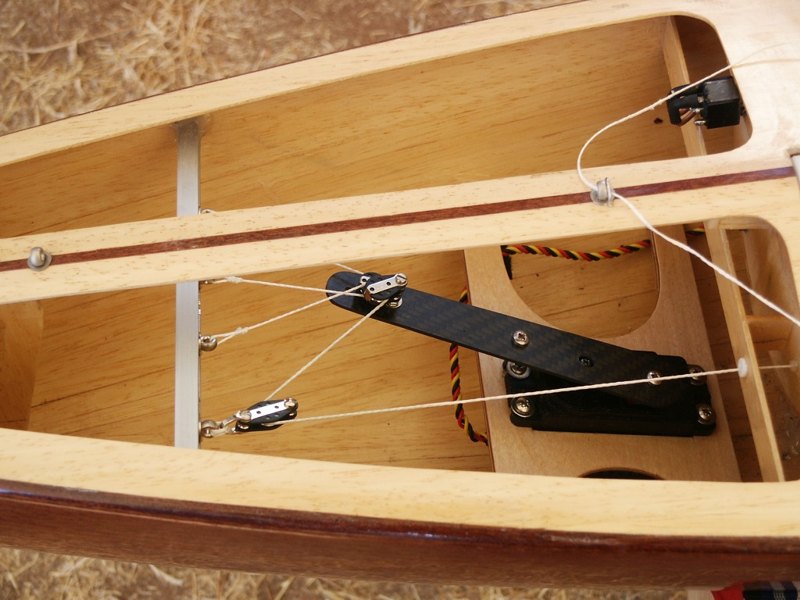Hi Steven,
The max angle I get is around 110º, but to be honest I set mine up so it goes from full in to full out so the angle wasn't a big issue for me. As long as there was enough movement in the arm to sheet tight in and ease right out so the sails are on the shrouds, I was happy to begin with, now I've learnt more I've got to tweak my system slightly so I can fine tune the sheeted in position as I've found at the top end of A rig conditions sheeting in isn't as swift as it could be, but a slight luff up and in she goes

I've read about shock cord on the otherside or with a cam which will probably eliminate the above problem, but I'd rather have no tension on the arm other than what the sails are providing. My thinking behind this is saving on battery power (maybe) but also in light conditions if the servo is having to work harder than it needs to it seems counter productive to me.
One other thing I must get round to doing, is smoothing off the notches in my transmitter throttle. Not that it adds friction to the throttles, but again from my big boat background I was always taught to ease the sheets softly. Where as, with the notches on the throttle, it jerks out one notch at a time...not a problem in heavy weather, but in light conditions the sails shake as the digital servo perfectly matches the throttle movement of the transmitter. This I believe disturbs the laminar flow on the sails, I don't have any evidence to back up my reason, but it's worth considering if you find the sailtrim to be jerky through no fault of your own





